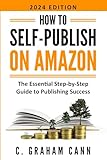Trade or Mass Market?
For those new to the publishing industry, it is easy to get lost in the terminology used by the trade. Here's a brief rundown of some of those terms.

In the past few months I have received a number of questions about distinguishing between the classifications of books. To help clear the confusion and let you label your books with ease, here are some standard definitions of books, trade books, mass-market books and textbooks
Books: All non-periodical hardcover volumes regardless of length, excluding coloring books, and all non-periodical softbound volumes over 48 pages.
Trade Books: Books designed for the general consumer and sold primarily through bookstores and to libraries ('trade,' then is in reference to the traditional trade markets these books are sold in). Though trade books were traditionally hard cover, in recent years more soft cover trade books have been common.
Mass-Market Books: Books sold predominantly through mass channels that extend beyond traditional trade outlest, such as book and department stores, to include newsstands, drug stores, chain stores, and supermarkets. Mass market paperbacks are usually printed on less expensive paper than trade paperbacks, and their covers are more likely to attract a mass audience.
Textbooks: Books designed for classroom use rather than general consumption. This category also includes workbooks, manuals, maps and other items intended for classroom use. Textbooks usually contain teaching aids, such as summaries and questions that distinguish them from consumer oriented materials (like trade books).
Read These Next
When Characters are Real
If you are the absolute master of all your characters, you can be sure they are not real. If, however, they surprise you now and then, you might just have the real thing.
Sonic Insights: The Case For Enriching Educational Catalogues with Audiobooks
In an era defined by innovation and evolving learning methodologies, publishers find themselves at a crossroads of opportunity. The traditional printed word, while timeless in its essence, is now joined by an increasingly popular, digital counterpart that taps into the human capacity for auditory engagement—audiobooks. As publishers navigate the ever-changing landscape of education, it’s time to explore why audiobooks should secure their place in the heart of educational catalogues.
The Dangerous Side of Children’s Books
As an author, if you’re inspired to delve into the slightly dangerous, dark or subversive corners of childhood with your books, feel free to do so. Don’t limit yourself to all that’s bright, safe and up to code.







 How To Self-Publish A Children's Book: Everything You Need To Know To Write, Illustrate, Publish, And Market Your Paperback And Ebook
How To Self-Publish A Children's Book: Everything You Need To Know To Write, Illustrate, Publish, And Market Your Paperback And Ebook How to Publish a Book on Amazon: A Bestseller’s Guide to Self-Publishing, Formatting, and Marketing Using Amazon Ads
How to Publish a Book on Amazon: A Bestseller’s Guide to Self-Publishing, Formatting, and Marketing Using Amazon Ads How to Self-Publish on Amazon: The Essential Step-by-Step Guide to Publishing Success
How to Self-Publish on Amazon: The Essential Step-by-Step Guide to Publishing Success How To Successfully Self-Publish A Book On Amazon & Audible: How To Build A Profitable Self-Publishing Business
How To Successfully Self-Publish A Book On Amazon & Audible: How To Build A Profitable Self-Publishing Business How To Self-Publish Your Book For Free And Not Get Conned
How To Self-Publish Your Book For Free And Not Get Conned How to Self-Publish Your Book: A Complete Guide to Writing, Editing, Marketing & Selling Your Own Book
How to Self-Publish Your Book: A Complete Guide to Writing, Editing, Marketing & Selling Your Own Book How to Self-publish and Market a Children's Book (Second Edition): Self-publishing in print, eBooks and audiobooks, children's book marketing, translation and foreign rights
How to Self-publish and Market a Children's Book (Second Edition): Self-publishing in print, eBooks and audiobooks, children's book marketing, translation and foreign rights Self-Publish & Succeed: The No Boring Books Way to Writing a Non-Fiction Book that Sells
Self-Publish & Succeed: The No Boring Books Way to Writing a Non-Fiction Book that Sells How to Self Publish A Book On Amazon: For Beginners
How to Self Publish A Book On Amazon: For Beginners How to Self Publish a Non-Fiction Book on Amazon: (From Someone Who Makes a Living Doing It) (Level up your knowledge)
How to Self Publish a Non-Fiction Book on Amazon: (From Someone Who Makes a Living Doing It) (Level up your knowledge)